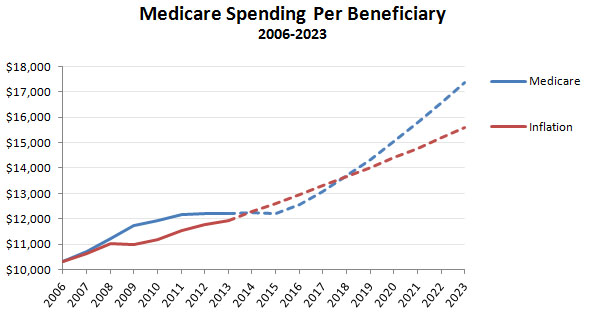Here it is: the biggest question mark in the entire federal budget. The 2014 Medicare Trustees Report is out today, and it shows, rather remarkably, that the cost per person of Medicare in 2013 was absolutely flat compared to 2012. Even more remarkably, they expect the combined increase over the next two years to be zero as well. In other words, Medicare costs are growing considerably slower than the inflation rate.
And now for the trillion-dollar question: How long will this slowdown last? The historical data in the report, along with future projections, suggests that between 2006 (when the prescription drug benefit began) and 2018, Medicare costs will have grown, on average, at exactly the rate of inflation. In real terms, that means zero growth over a 12-year period. But Medicare’s actuaries don’t expect that to last. Starting in 2017 they expect high growth rates again, leading to Medicare spending outpacing inflation.
This is by far the biggest unknown going forward in the federal budget: Will Medicare spending continue to increase slowly, or will it revert to the higher growth rates of the early aughts? You can make a pretty good case either way. But no matter what anyone tells you—including me—don’t be fooled. The real answer is that We. Just. Don’t. Know.














